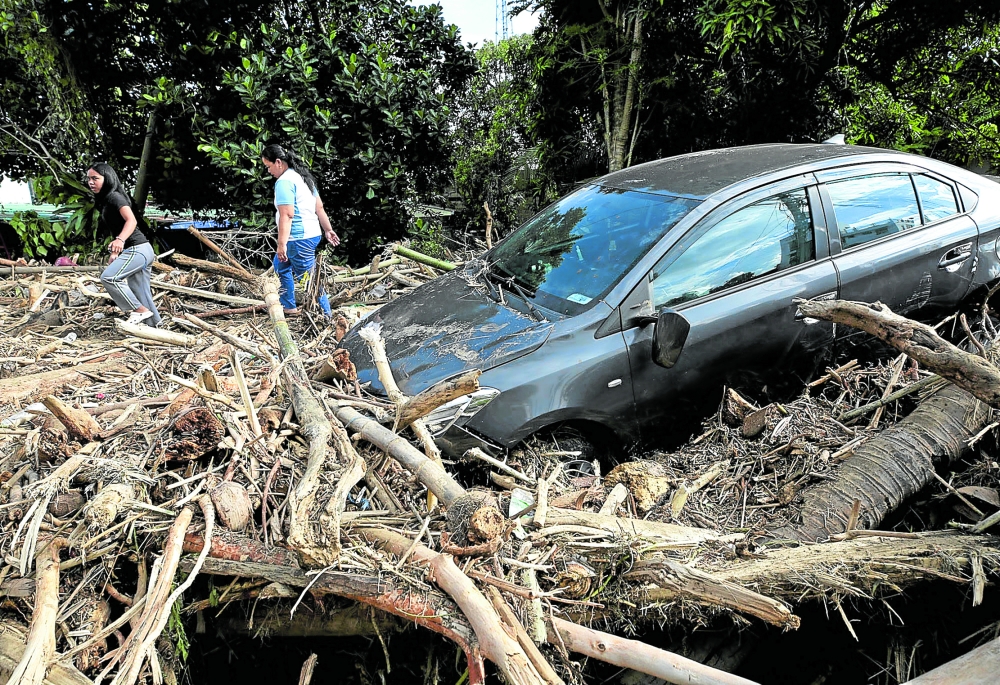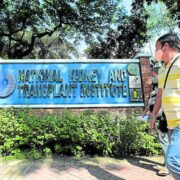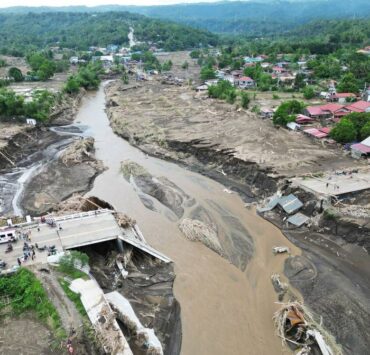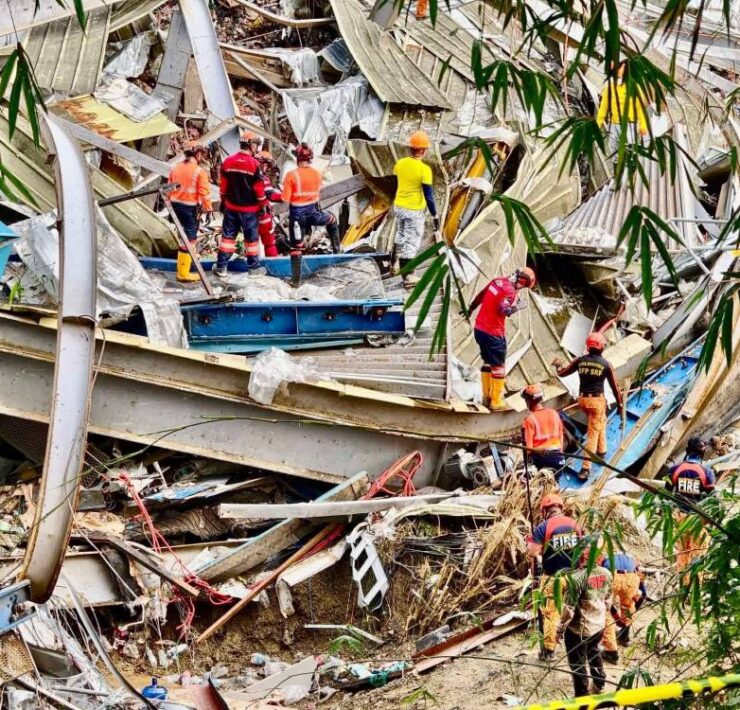‘Kristine’ deaths up with Calabarzon toll

Heavy rain and geography became a deadly combination when southeastern Luzon was inundated as Severe Tropical Storm “Kristine” (international name: Trami) swiped across the country last week, triggering flash floods and landslides which disaster officials blamed for most of the 85 deaths reported on Saturday.
The Office of Civil Defense (OCD) said that the Calabarzon region, comprised of Cavite, Laguna, Batangas, Rizal and Quezon, had the highest number of deaths at 48, followed by the Bicol region with 28.
The Cordillera Autonomous Region reported two deaths and the Ilocos and Zamboanga Peninsula regions had one each.
The OCD said 41 were still missing and 70 were reported injured as of Saturday. Flooding was most widespread in the Bicol region.
The National Disaster Risk Reduction and Management Council (NDRRMC) said on Saturday that 584 areas remained flooded in various towns in the 15 regions affected by Kristine from the Ilocos region down to Mindanao.
Bicol River Basin
Guillermo Molina Jr., director of the Mines and Geosciences Bureau (MGB) Bicol, explained that some of the worst flooded areas—from the third district of Albay province going to Naga City and the towns of Milaor, Cabusao and Libmanan area in Camarines Sur—were part of the Bicol River basin and the water catch basin of these provinces. (See related story on this page)
He said the floodwater in these areas would usually subside easily but there could be other factors, including the fact that the rainfall between Tuesday and Wednesday was so heavy that it did not drain that fast.
“If it retards and there were changes in the flow and situation, like 700 millimeters of water, which is huge, we cannot immediately expect that it will recede. And because of floods, there may be debris that clogs it that must be cleared first,” Molina told the Inquirer in a phone interview on Saturday.
Naga City Mayor Nelson Legacion said that the amount of rain that fell on Naga City within 24 hours starting early on Tuesday reached 679 mm, which was almost seven times more than the volume of rain the city received in a month.
According to the MGB, the general average rainfall per month in any given area in Bicol ranges from 100 mm to 500 mm, from the summer to the rainy season.
Weather specialist Jofren Habaluyas told the French news agency, Agence France-Presse (AFP), that Batangas province had seen “two months’ worth of rain,” or 391.3 mm, just on Thursday and Friday.
Batangas situation
In Agoncillo, Batangas, the local government reported that nine residents died from flash floods and six were missing.
The Calabarzon police reported that two died from a flash flood in Cuenca town, seven from a landslide in Laurel, two from fallen trees in Lian and Calaca towns. It said one drowned in Calatagan and another in Tanauan City, and two were electrocuted separately in Tanauan and Lipa City.
At least seven residents in Balete were still missing after a flash flood.
Floodwaters were rising so fast as early as Tuesday last week that some residents in Bicol quickly removed parts of their roofs of their homes to seek shelter on the rooftops where they waited for either rescue or for the flood to subside.
Officials in Naga City and the outlying provinces of Camarines Sur and Albay pleaded for more rescue boats at the height of the storm to reach people trapped on the upper floors of their homes or on their roofs as floodwaters rose.
In the foothills of Mayon Volcano in Albay, mud and other volcanic debris cascaded toward nearby towns as the storm hit, engulfing houses and cars in black-colored mudflows.
Undersecretary Ariel Nepomuceno, the OCD administrator, said most of the missing individuals were believed to have been buried in the landslides.
“Hopefully, we can still find the others,” he said at a news forum in Quezon City on Saturday.
Talisay landslide
According to police reports, of the over 40 people who died in Batangas, 18 were killed in a landslide that hit the village of Sampaloc in the town of Talisay on Thursday night.
Talisay Mayor Nestor Natanauan said that as of 6 p.m. on Friday, they were still searching for an undetermined number of missing in the Sampaloc landslide.
“Excavations are also ongoing to locate missing individuals and houses buried by the landslide,” he said on Facebook.
Police said that among the victims in the Sampaloc landslide were five young siblings, including a 2-month-old boy.
Standing on the hillside rubble of the Sampaloc landslide, Batangas Police Director Col. Jacinto Malinao Jr. said there were “pockets of landslides” all the way from nearby Tagaytay.
“All the water, and the fallen trees, boulders and soil come down to this place,” he told GMA News.
Malinao told the Associated Press (AP) in a separate interview by phone that one villager was looking for his wife and child who went missing after the landslide.
With the use of a backhoe and shovels, police scrambled to search into 3 meters of mud, rocks and debris and found a part of a head and foot that apparently were those of the missing woman and child.
“He’s simply devastated,” Malinao said of the villager, a fisherman who was tending to fish cages in a lake when the landslide struck Thursday afternoon amid torrential rain.
‘Tsunami’ in Cavite
Flash floods turned streets into rampaging rivers, like in Noveleta, Cavite, where the driver of a mini-bus told GMA News that he and his passengers escaped on Thursday from a flash flood that was “like a tsunami” before the vehicle slammed against a lamppost and overturned.
In Laurel, a scenic town nestled near volcanic Lake Taal, AFP reporters saw roads blocked by felled trees, vehicles half-submerged in mud and homes severely damaged by flash flooding.
“We saw washing machines, cars, home equipment, roofs being swept away,” Mimie Dionela, 56, told AFP.
“We’re lucky (the rain) happened in the morning, for sure many would’ve died if it happened at night,” she said. “It was indescribable how scared we were.”
Floodwaters up to 1.5 meters high that hit some areas in the cities of Malolos and Meycauayan and the town of Calumpit, Obando and Balagtas in Bulacan displaced 406 families, or 1,407 individuals, according to the provincial disaster risk reduction and management office on Friday.
1M families affected
The OCD said 4.472 million individuals, or 1.062 million families, were affected by Kristine, with 311,468 people still in evacuation centers across the country. Bicol accounted for most of those affected by the storm and still in government shelters.
The NDRRMC said 84 cities and municipalities, mostly from Calabarzon, Bicol and Central Luzon regions, have already declared a state of calamity.
About 20 typhoons enter the Philippines yearly. Although not all of them make landfall, their rain clouds and strong winds still cause massive destruction and send thousands to emergency shelters.
Earlier this month, five were killed after Typhoon “Julian” (Krathon) wreaked havoc in Northen Luzon while at least 20 died when Typhoon “Enteng” Yagi) hit the country in September.
Supertyphoon “Yolanda” (Haiyan), one of the strongest recorded tropical cyclones, left more than 7,300 people dead or missing and flattened entire villages as it barreled through the central Philippines in November 2013. —WITH REPORTS FROM DELFIN T. MALLARI JR., MA. APRIL MIER-MANJARES, CARMELA REYES-ESTROPE, AFP, AP AND REUTERS




















